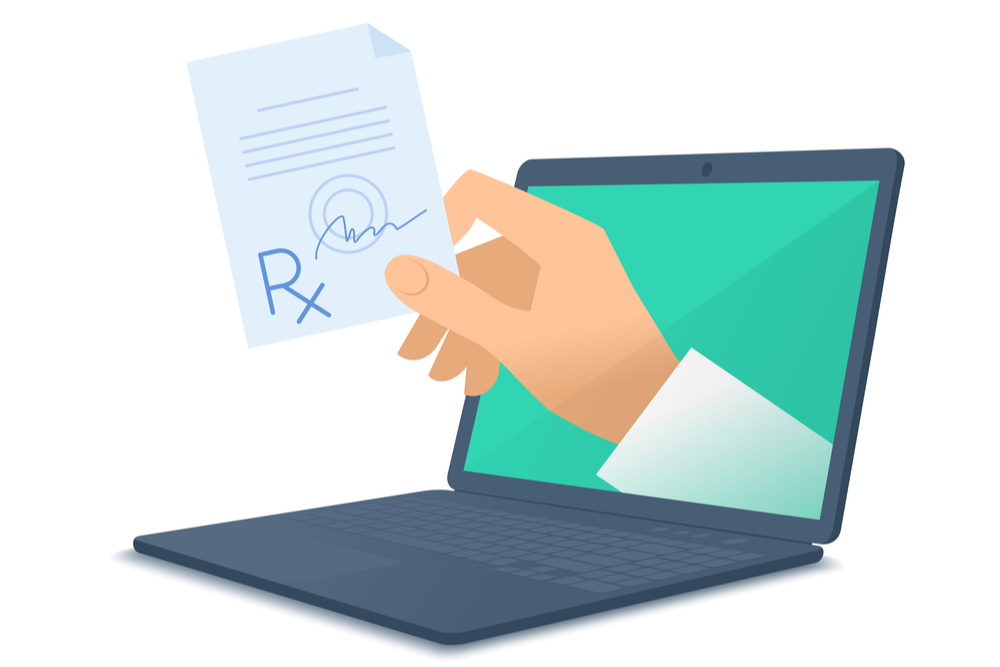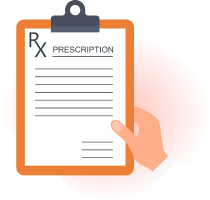Understanding High Cholesterol: Symptoms, Risks, and Treatment Options
By: Dr. Nima Mehran | MD
High cholesterol, or hypercholesterolemia, affects nearly 1 in 3 American adults—yet it often goes undetected until a serious event like a heart attack or stroke occurs. It's one of the major modifiable risk factors for cardiovascular disease, the world’s leading cause of death.
Despite its ominous reputation, cholesterol itself isn’t inherently harmful. It plays essential roles in hormone production, vitamin D synthesis, and cellular structure. The problem arises when levels exceed what the body needs, particularly low-density lipoprotein (LDL), or “bad” cholesterol.
In this article, we explore the biological function of cholesterol, symptoms to watch for, the modern diet’s impact, treatment strategies, and the most commonly prescribed medications. As always, SaveHealth aims to empower you with clear, actionable health knowledge. As a prescription coupon website, you can find savings and discounts on SaveHealth.
What Is Cholesterol?
Cholesterol is a fat-like substance found in all the cells of your body. It is crucial for:
Building cell membranes
Producing hormones like estrogen, testosterone, and cortisol
Synthesizing vitamin D
Creating bile acids for digesting fats
Your liver produces enough cholesterol to support these functions, but it also enters your system through animal-based foods like red meat, eggs, and dairy.
Types of Cholesterol:
LDL (Low-Density Lipoprotein): Known as "bad" cholesterol because it can build up in artery walls, forming plaque and increasing cardiovascular risk.
HDL (High-Density Lipoprotein): Called "good" cholesterol because it removes excess LDL from the bloodstream.
Triglycerides: A type of fat in the blood; high levels are often linked to obesity, diabetes, and poor diet.
Causes and Risk Factors
High cholesterol develops over time and is usually the result of a combination of genetics and lifestyle choices:
Unhealthy Diet: High in saturated and trans fats, sugar, and cholesterol-rich foods.
Physical Inactivity: Lack of movement leads to poorer fat metabolism.
Obesity: Especially abdominal obesity, correlates strongly with high LDL and low HDL.
Smoking: Reduces HDL and damages blood vessel linings, promoting plaque buildup.
Genetics: Familial hypercholesterolemia can cause dangerously high cholesterol even in childhood. age (>45 men, >55 women), sex (women tend to have higher LDL post menopause), and ethnicity (african americans, hispanics, south asians) More information found here.
Chronic Conditions: Diabetes, hypothyroidism, liver disease, and kidney disease all impact lipid metabolism.
Excessive alcohol consumption: Increases triglycerides and may cause liver dysfunction
Symptoms of High Cholesterol
One of the most dangerous aspects of high cholesterol is its silent nature. Most people experience no symptoms until it leads to a heart attack, stroke, or peripheral artery disease. However, in rare or extreme cases, physical signs may include:
Xanthomas: Yellowish cholesterol deposits in the skin, especially around joints or tendons.
Xanthelasmas: Yellow patches around the eyelids, often a cosmetic concern but a medical red flag.
Arcus Senilis: A gray-white ring around the iris, potentially an early marker in people under 45.
These signs are typically associated with genetic cholesterol disorders and warrant immediate medical attention.
Health Risks Associated with High Cholesterol
Unchecked, high cholesterol silently damages your vascular system:
Atherosclerosis: Hardening and narrowing of arteries due to plaque buildup.
Coronary Artery Disease (CAD): Reduced blood flow to the heart, leading to angina or heart attack.
Stroke: Clots or narrowed arteries in the brain can cause ischemic stroke.
Peripheral Artery Disease (PAD): Restricted blood flow to limbs, causing pain or even gangrene.
Chronic Kidney Disease: Reduced blood flow affects renal function over time.
Interesting Observation: The damage from high cholesterol often begins in early adulthood, but symptoms may not appear for decades—highlighting the importance of preventive care and screening.
How the Modern American Diet Contributes to High Cholesterol
The Standard American Diet (SAD) plays a major role in rising cholesterol levels. This diet is characterized by:
1. Excess Saturated and Trans Fats
Fast food, red meat, baked goods, and full-fat dairy are rich in fats that raise LDL cholesterol.
Trans fats are particularly dangerous: they not only increase LDL but decrease HDL, compounding cardiovascular risk.
2. Processed and Convenience Foods
Packaged meals, snacks, and fast food are typically loaded with sodium, unhealthy fats, and sugar—all of which contribute to dyslipidemia (abnormal lipid levels).
A 2021 study in The Journal of the American College of Cardiology linked ultra-processed food intake to significantly higher LDL and triglyceride levels.
3. High Sugar Intake
Though sugar contains no cholesterol, it promotes:
Obesity
Liver fat accumulation (non-alcoholic fatty liver disease)
High triglycerides
4. Low Fiber Consumption
Fiber helps eliminate cholesterol from the body, yet most Americans consume less than half the recommended daily amount.
5. Supersized Portions
Portion sizes in the U.S. have ballooned over the past few decades, contributing to excessive calorie—and cholesterol—intake.
Observation: Mediterranean countries often consume higher fat diets but have lower cholesterol-related diseases. The key? Their fats come from nuts, seeds, fish, and olive oil, not processed food.
Diagnosis: How Is High Cholesterol Identified?
The only way to know your cholesterol status is through a lipid panel—a simple blood test that measures:
Total Cholesterol
LDL (“bad”) Cholesterol
HDL (“good”) Cholesterol
Triglycerides
Recommended Screening Schedule:
Ages 20–39: Every 4–6 years (more frequently if risk factors exist)
Ages 40+: Every 1–2 years
High-Risk Groups: Annually or as recommended
At-home testing kits are available but should be followed up by a healthcare provider for full assessment and treatment planning.
Treatment Strategies
Lifestyle Changes: The First Line of Defense
Adopt a Heart-Healthy Diet: Emphasize plant-based foods, soluble fiber (oats, beans, lentils), and healthy fats (olive oil, avocado).
Get Moving: At least 150 minutes of moderate-intensity aerobic exercise per week.
Lose Weight: Even a modest 5–10% reduction can improve lipid profiles.
Quit Smoking: Within weeks, HDL levels begin to rise.
Limit Alcohol: Excess consumption can raise triglyceride levels and contribute to liver damage.
SaveHealth Tip: Replace white rice with quinoa or barley; switch from butter to olive oil; snack on almonds instead of chips.
Popular Medications for High Cholesterol
When lifestyle changes aren’t enough—or when cholesterol levels are dangerously high—medications are introduced. Here are the most common classes:
1. Statins
How They Work: Block cholesterol production in the liver.
Examples: Atorvastatin (brand version: Lipitor), Rosuvastatin (brand version: Crestor), Simvastatin (brand version: Zocor)
Benefits: Lower LDL by 20–60%, raise HDL modestly, and reduce heart attack risk.
Interesting note: Statins are among the most studied drugs in medicine, with over 30 years of efficacy and safety data.
2. Ezetimibe (brand version: Zetia)
Function: Reduces intestinal absorption of dietary cholesterol.
Use: Often combined with a statin for additional LDL reduction.
3. PCSK9 Inhibitors
Type: Injectable monoclonal antibodies.
Use Case: Familial hypercholesterolemia or statin intolerance.
4. Bile Acid Sequestrants
Bind to bile acids in the gut, forcing the liver to use cholesterol to make more.
Examples: Cholestyramine, Colesevelam
5. Fibrates
Lower triglycerides and raise HDL.
Examples: Fenofibrate (Tricor), Gemfibrozil (brand version: Lopid)
6. Niacin
Vitamin B3 derivative that can improve all aspects of a lipid panel.
Side effects (e.g., flushing, liver strain) have limited its use in modern care.
7. Bempedoic Acid
A newer oral drug for those who cannot tolerate statins.
Works similarly in the liver but doesn’t affect muscle tissue.
8. Omega-3 Fatty Acid Supplements
Lowers triglycerides
Vascepa (Icosapent ethyl - FDA approved for severe hypertriglyceridemia and cardiovascular risk reduction), Lovaza (Omega-3-acid ethyl esters - FDA approved for severe hypertriglyceridemia and is a mix of EPA and DHA) and OTC fish oil
High Cholesterol
High cholesterol may be silent, but its effects are anything but. It erodes your vascular system over time and sets the stage for catastrophic health events. But the good news? It’s measurable, treatable, and preventable.
Whether you’re managing borderline numbers or recovering from a cardiac scare, your actions—eating better, moving more, quitting smoking, taking medications—can dramatically improve your health outlook.
At SaveHealth, we encourage you to view cholesterol not as a fate, but as a call to action. Your heart will thank you for it.
References
Centers for Disease Control and Prevention (CDC): Cholesterol Facts
American Heart Association: Cholesterol Medications
Harvard Health Publishing: Lowering Cholesterol
Cleveland Clinic: Cholesterol Disorders
National Lipid Association: Patient Resources

Related Articles

The Acne Medication Playbook: From Drugstore Staples to the Nuclear Option Doctors Save for Last
Acne is not just a teenage problem it's a...

Understanding High Cholesterol: Symptoms, Risks, and Treatment Options
High cholesterol, or hypercholesterolemia, affects nearly...

Understanding Anxiety: Symptoms, Treatments, and Medications
Anxiety disorders are among the most prevalent...

The Dark Side of Slimming Down: A 100-Year Journey of Weight Loss Drugs
Weight loss drugs have long occupied a complicated...
